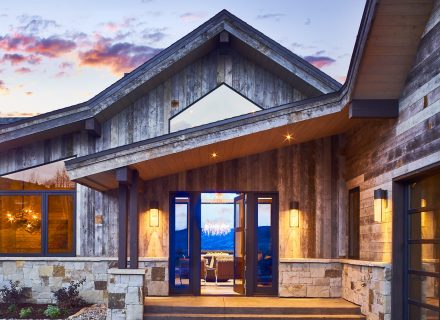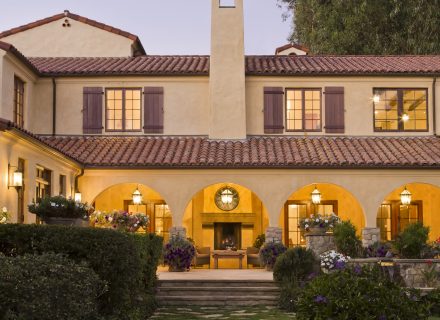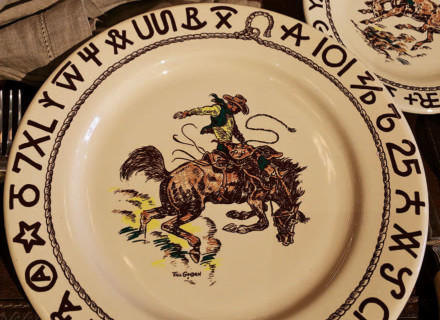As just the second proprietors of the 70-year-old pottery house, Robin Petravic and Catherine Bailey know something about celebrating the past.
Since being founded in California in 1948, Heath Ceramics has operated under the helm of just two owners: founders Edith and Brian Heath until 2003, and current proprietors Robin Petravic and Catherine Bailey. We spoke to the husband-and-wife duo for our January 2019 issue, and here they answer a few more of our questions about values, preservation, and supporting their fellow American-made companies.
Cowboys & Indians: What does it mean to be only the second owners of this 70-year-old company?
Robin Petravic & Catherine Bailey: Heath resonates with people because we are driven by the same values we always have been, and it’s our job as owners to understand and upkeep those values, even though so many things have changed about how businesses work and the impact they have. Today, Heath’s values and products are even more radical than in the 1950’s. We’re driven by making beautiful things, slowly, and with care and in our own factories and studios. We are not in business to make money, though having a sustainable business model is integral to allowing us to never compromise, and stay true to our vision. Being the owners today, and the second family to own the business, we carefully balance preservation with looking forward.
I believe everything we make is beautiful and we make our ceramics with our own hands and in our own factories and studios.
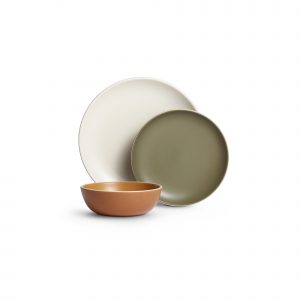 C&I: How did the original Coupe dinnerware collection inspire your vision or designs for other collections?
C&I: How did the original Coupe dinnerware collection inspire your vision or designs for other collections?
RP & CB: From a design perspective, we are always looking back at the foundational shapes, colors, and materials of the early Coupe line. When designing new products, such as the Heath Large Mug, we try to understand the character in those early shapes. Their unadorned function is powerful and the desire for the material and glaze to meld together and create the character makes its way into all things we design. These characteristics make the objects feel “Heath” and so we study that carefully and are conscious on how far we push new ideas and designs. Our Chez Panisse line takes Heath dinnerware somewhere new, but the character and softness of the curves and the thickness and weight of the clay make it fit comfortably in the Heath family of products.
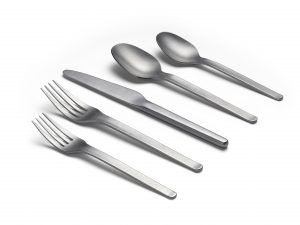 C&I: How and why did you come to partner with Sherrill Manufacturing for the Muir Flatware set?
C&I: How and why did you come to partner with Sherrill Manufacturing for the Muir Flatware set?
RP & CB: Since dinnerware goes goes hand in hand with flatware we’ve always had the desire to create our own flatware designs, but it was not until we found Sherrill Manufacturing (the last flatware manufacturer in the US) that we believed we could create a product with the integrity that that we needed.
Sherrill is the last remaining flatware manufacturer in America. We have an affinity for companies with heritage and even more so for those remaining when all others have gone elsewhere or are no longer. When visiting Sherrill, we saw similarities in our Sausalito dinnerware factory: an honest spirit committed to craft with original machinery, generations of skill, minimal computers, and many hands instead. The Sherrill team is comprised of up to 50 people and operates today in the 125,000 square-foot former Oneida flatware facility. Each team member is deeply skilled in different aspects of the manufacturing process; there are usually 15 to 20 steps to create just one piece of flatware.
C&I: 70 years is a long time to be in business. In your 15 years at Heath Ceramics, what have you done to stay relevant but still true to the company mission?
RP & CB: We never think about modernizing in a big way. Instead, we think more about what feels right to do now. For example, in 2012, Heath had grown enough that it felt like production pressure might start to overshadow our ability to create and play with clay. So we started the Heath Clay Studio. In a way, it’s the opposite of modernizing the company. We decided that we wanted to be able to throw pots by hand and make things in a small clay studio that had nothing to do with our factory. Today, you can find pieces from our studio in our stores that are made by two potters in San Francisco. Even though we make a lot more dinner plates, the vision of playing and experimenting with clay and respecting the skill of creating pottery by hand is stronger than ever and keeps us true to the original mission of Heath.
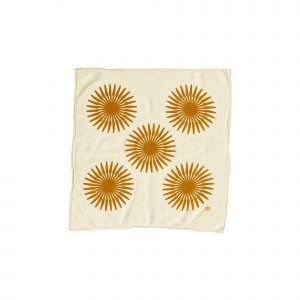 C&I: What is your favorite thing about the products you create?
C&I: What is your favorite thing about the products you create?
RP & CB: I believe everything we make is beautiful and we make our ceramics with our own hands and in our own factories and studios. What is important is the design and care beyond the product. We love to connect with our customers, so we sell these things in our own showrooms, and each showroom is unique. Thus it all feels considered and unique, and defines our pace. You’ll see us making soft goods now, playing with textiles, and working with the last remaining flatware factory in the US. Our one factory limits our scale, and defines our pace, but our creativity, projects, and range continue to grow. It’s not to say that we’ll never open another store or studio, but we’re not driven by that as an end goal. All parts of the business are connected and balanced to make things evolve at the right pace, to continue to make beautiful things, ourselves.
Read more about the 70th anniversary of Heath Ceramics in our January 2019 issue.
PHOTOGRAPHY: Courtesy Heath Ceramics














